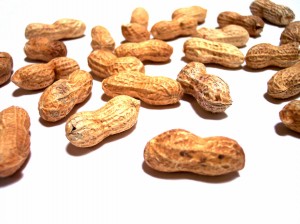Make anything. This is the ideology fueling the 3D printing industry as it takes steps to become increasingly domesticated.
Though it was originally introduced in the mid-1980s, the technology quickly gained momentum throughout the 1990s as it made incredible strides in facilitating advances in engineering, architecture, and manufacturing. Only for the last decade has the scope of applications boomed exponentially, with biomedicine at the core.
3D printing works as an additive process where multiple layers of a particular material are laid down in specific shapes on top of each other to create a solid 3D object from a digital model. Of the many methods that utilize this additive approach, selective laser sintering (SLS) has emerged as one of the most common.
Though SLS originally began as a way to manufacture prototype parts in the early phases of designing products, it is now being utilized to manufacture end use parts. SLS begins when a 3D computer-aided-design (CAD) file is sliced to make 2D cross-sections, similar to how radiologists make 2D cross sections of body organs with CT scans for surgical and diagnostic purposes.
Afterwards, a computer-guided laser sinters (heats and fuses) a range of powders, such as Nylon-11 and Nylon-12 polyamides, to construct the designed part layer-by-layer, allowing a targeted precision that is not possible with traditional manufacturing, according to Solid Concepts, an industrial leader in 3D printing.
Shivam Patel, senior biology major commented that “The large-scale impact of 3D printing as it takes steps to become increasingly available is nothing short of remarkable. As its cost continues to drop, 3D printing will become only more accessible to students, researchers, and entrepreneurs, paving the way for a new age of innovation.”
In an interdisciplinary collaboration last year, a team of medical researchers, engineers, and surgeons successfully replaced the jaw of an 83-year old woman with its 3D printed counterpart.
A severe infection had rendered the patient’s jaw in need of immediate replacement, but due to the woman’s advanced age, traditional treatments that would focus on reconstruction surgery of the present jaw were more prone to further complications.
According to Xilloc, the manufacturer of the titanium jaw implant, the synthetic mandible synthesized, using SLS from 3D CAD files, allowed the woman to resume normal breathing, swallowing, speaking, and sensation functions just a day after surgery.
In response to such advances, Nick Kulka, a senior biology major, believes that “3D printing is an exciting technology that can hold a wide array of applications. It can bring about some interesting notions and ways of thinking about technology that did not exist before. The future is becoming a fascinating place as a result.”
Sam Broadbent, senior chemistry major, thought that “With 3D printing being used to create fun and cool everyday items, people underestimate the use 3D printing might one day serve in aiding numerous third world countries. By printing medical equipment, along with other difficult to obtain items, 3D printing has a bright future.”
Similar to the large-scale expansion of products manufactured by SLS is that of the source materials of the products themselves. Using SLS, a fully functional 3D printed metal gun was recently developed by Solid Concepts, which subsequently became the first 3D printing service with a Federal Firearms License. To curb the possibility of vendors distributing 3D-printed guns without licenses, lawmakers in Philadelphia, PA and New York City have already passed bills to keep such guns off the streets.
Kent Firestone, Vice President of Additive Manufacturing at Solid Concepts said, “The whole concept of using a laser sintering process to 3D print a metal gun revolves around proving the reliability, accuracy and usability of metal 3D printing as functional prototypes and end use products.” He added, “It’s a common misconception that 3D Printing isn’t accurate or strong enough, and we’re working to change people’s perspective.”
Likewise, if 3D printing can produce a fully functioning metal gun, what can’t the technology produce? The expiration of key patents in Feb. 2014 blocking competition of 3D printing technologies utilizing low-cost SLS for instance, will help 3D printing actualize its potential to transform manufacturing among a myriad of other industries.
Following the patent expirations, Duann Scott, designer at the 3D printing company Shapeways said, “We could see a huge drop in the price of these devices as one [3D printer] which was $14,000 five years ago is now $300.”
With the coming of this addendum, consumer-based innovation may yield in the mass customization of everything from coffee cups to medical instruments tailored to target specific needs, at the benefit of cost and availability.
As 3D-printing technology continues to be mined for its wide scale applications, its ulterior impact may rival that of the steam engine in the Industrial Revolution. After all, who thought that a single machine could give rise to the dawn of urbanization?



